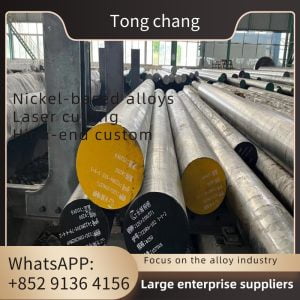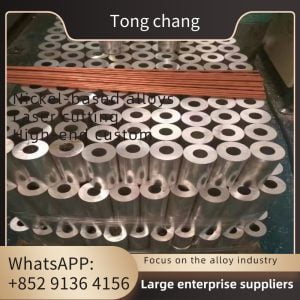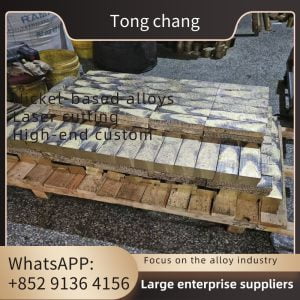| Product Name: | Stainless Seamless Tube | Specification: | ASTM A213 / ASME A213 |
|---|---|---|---|
| Schedule: | SCH20, SCH30, SCH40, STD, SCH80, XS, SCH60, SCH80, SCH120, SCH140, SCH160, XXS | Length: | Single Random, Double Random & Cut Length |
| Form: | Round,Square,Rectangular,Hydraulic Etc. | End: | Plain End, Beveled End, Treaded |
| High Light: | UNS S32100 Stainless Steel Seamless Tube, Stainless Steel Seamless Tube Cold Drawn, SCH20 Round Seamless Tube | ||
ASTM A213 TP321 1.4541 UNS S32100 Stainless Steel Seamless Tube Cold Drawn Low Temperature Application
321 stainless steel is a material with excellent high temperature Stress Rupture properties and high temperature Creep Resistance stress mechanical properties are better than 304 stainless steel. 321 stainless steel has good corrosion resistance in the atmosphere and is widely used in petrochemical, electric power, bridge and automobile industries.
Austenitic stainless steel equivalent to domestic grade 0Cr18Ni10Ti 321 stainless steel is Ni-Cr-Mo austenitic stainless steel, its performance is very similar to 304, but due to the addition of titanium metal, so that it has better resistance to grain boundary corrosion and high temperature strength. Due to the addition of titanium metal, it effectively controls the formation of chromium carbide.
321 austenitic stainless steel has good corrosion resistance in the atmosphere and is widely used in petrochemical, electric power, bridge and automobile industries . However, the "stainless steel" is not absolute, due to the special service environment, stainless steel will also corrosion. Medium concentration, pH value, temperature and other factors will have a greater impact on the corrosion resistance of stainless steel. For example, in the sensitization temperature range of 450~850℃ for a long time, stainless steel will occur intergranular corrosion. The mechanism is that C combines with Cr at the grain boundary to form Cr23C6 and precipitates, so that the Cr content at the grain boundary is reduced, which is the so-called "chromium poor". The Cr element is one of the main elements to inhibit intergranular corrosion, when the Cr content at the grain boundary is less than 12%, the probability of intergranular corrosion will be increased.
What is the chemical composition of 321 stainless steel?
The main chemical components of 321 stainless steel include:
Iron (Fe) : about 60-75% of the total mass of the alloy.
Nickel (Ni) : about 8-11%. The corrosion resistance of the alloy is improved.
Chromium (Cr) : about 17-20%. The hardness, wear resistance and corrosion resistance of the alloy are increased.
Manganese (Mn) : About 2%. The strength and toughness of the alloy are improved.
Silicon (Si) : about 1%. The cold working properties of the alloy are affected.
Carbon (C) : Limited to 0.08%. Control the hardness and strength of the alloy.
Phosphorus (P), sulfur (S) : All are limited to low levels to avoid negative effects on corrosion and mechanical properties of the alloy.
These chemical components work together to make 321 stainless steel have good corrosion resistance, heat resistance, mechanical strength and good weldability.
What are the mechanical properties of 321 stainless steel?
321 stainless steel is a high strength, corrosion resistant stainless steel. It has excellent mechanical properties, mainly including the following aspects:
Tensile strength: at room temperature, the tensile strength of 321 stainless steel is about 515MPa.
Yield strength: at room temperature, the yield strength of 321 stainless steel is about 205MPa.
Elongation: The elongation of 321 stainless steel is about 40%, indicating that it has good ductility.
Hardness: 321 stainless steel hardness is about HB217.
It should be noted that the mechanical properties of 321 stainless steel will be affected by processing methods, heat treatment and other factors.
What are the physical properties of 321 stainless steel?
321 stainless steel is a kind of stainless steel with good physical properties, the following are its main physical properties:
Density: The density of 321 stainless steel is about 7.93g/cm³.
Melting point: The melting point of 321 stainless steel is about 1398℃.
Thermal conductivity: The thermal conductivity of 321 stainless steel is 16.2 W/(m.K) at room temperature.
Thermal expansion coefficient: The linear expansion coefficient of 321 stainless steel is 16.5×10^-6 /K.
Magnetic: 321 stainless steel is a non-magnetic material and does not produce magnetism in a magnetic field.
It should be noted that the physical properties of 321 stainless steel will also be affected by factors such as material status and processing methods.
Mechanical & Physical Properties
| Density | 8.0 g/cm3 |
| Melting Point | 1454 °C (2650 °F) |
| Tensile Strength | Psi – 75000 , MPa – 515 |
| Yield Strength (0.2%Offset) | Psi – 30000 , MPa – 205 |
| Elongation | 35 % |
Chemical Composition
| SS 321 | SS 321H | |
| Ni | 9 – 12 | 9 – 12 |
| Cr | 17 – 19 | 17 – 19 |
| C | 0.08 max | 0.04 – 0.10 |
| N | 0.10 max | |
| Fe | Balance | |
| Mn | 2 max | 2 max |
| Si | 0.75 max | 0.75 max |
| S | 0.03 max | 0.03 max |
| P | 0.045 max | 0.045 max |
| Ti | 5xC min 0.60% max | 4xC min 0.60% max |
Specifications of ASTM A213 TP321 Stainless Steels
| Grade | UNS No | Old British | Euronorm | Swedish SS | Japanese JIS | ||
| BS | En | No | Name | ||||
| 321 | S32100 | 321S31 | 58B, 58C | 1.4541 | X6CrNiTi18-10 | 2337 | SUS 321 |
| 321H | S32109 | 321S51 | – | 1.4878 | X10CrNiTi18-10 | – | SUS 321H |
| 347 | S34700 | 347S31 | 58G | 1.4550 | X6CrNiNb18-10 | 2338 | SUS 347 |
| These comparisons are approximate only. The list is intended as a comparison of functionally similar materials not as a schedule of contractual equivalents. If exact equivalents are needed original specifications must be consulted. | |||||||
Industry application:
1. Oil exhaust gas combustion pipeline
2. Engine exhaust pipe
3. Boiler shell, heat exchanger, heating furnace parts
4. Diesel engine muffler parts
5. Boiler pressure vessel
6. Chemical trucks
7. Expansion joints
8. Spiral welded pipe for furnace pipe and dryer








